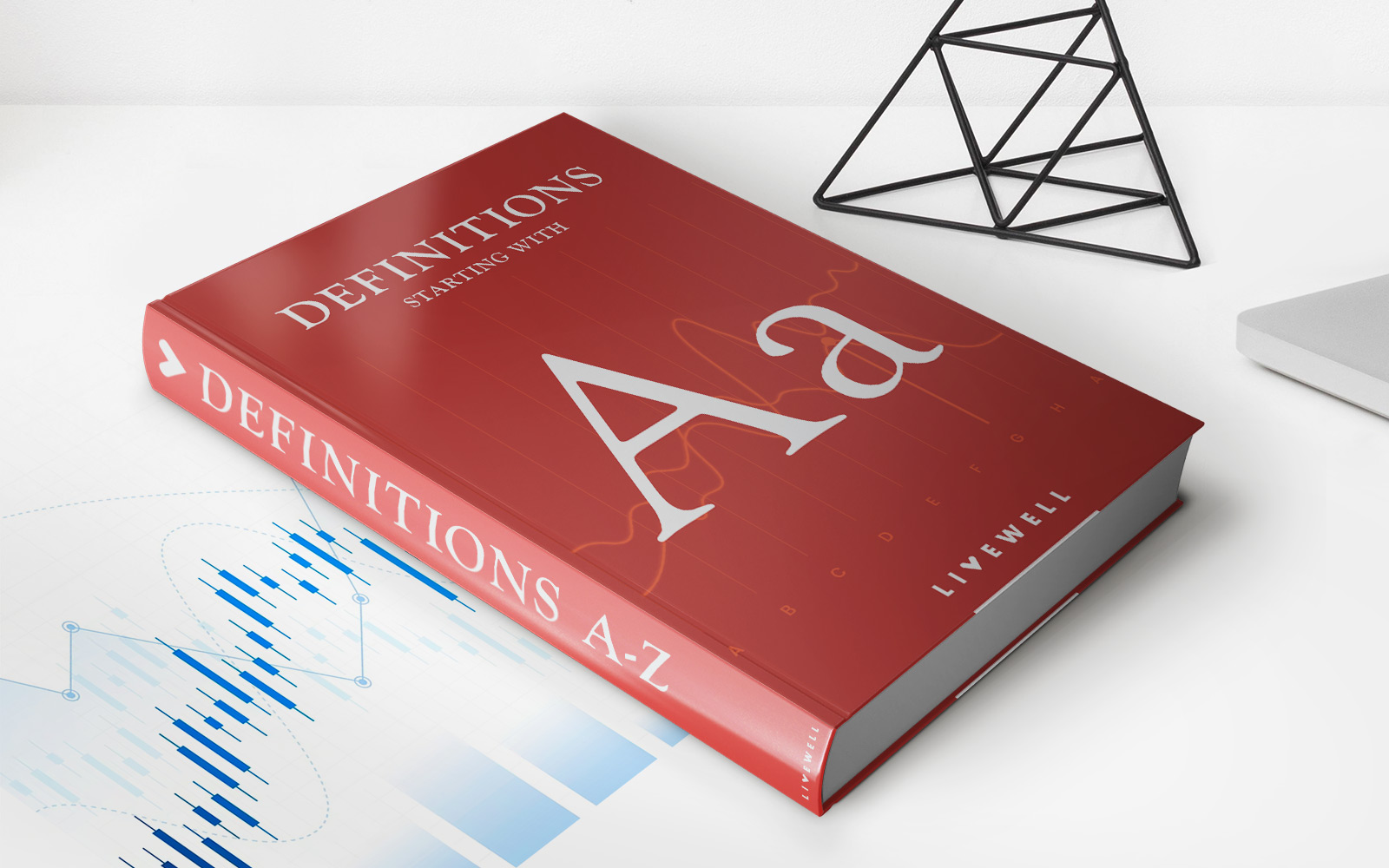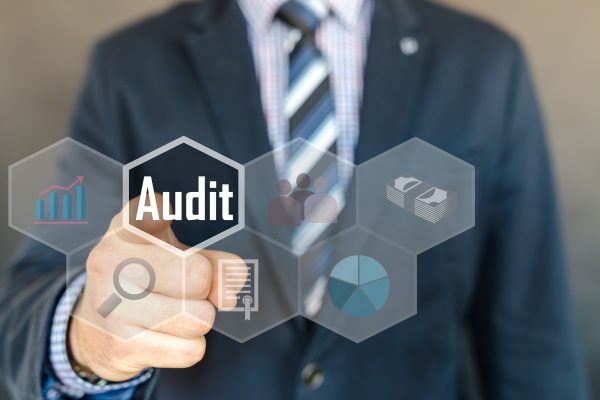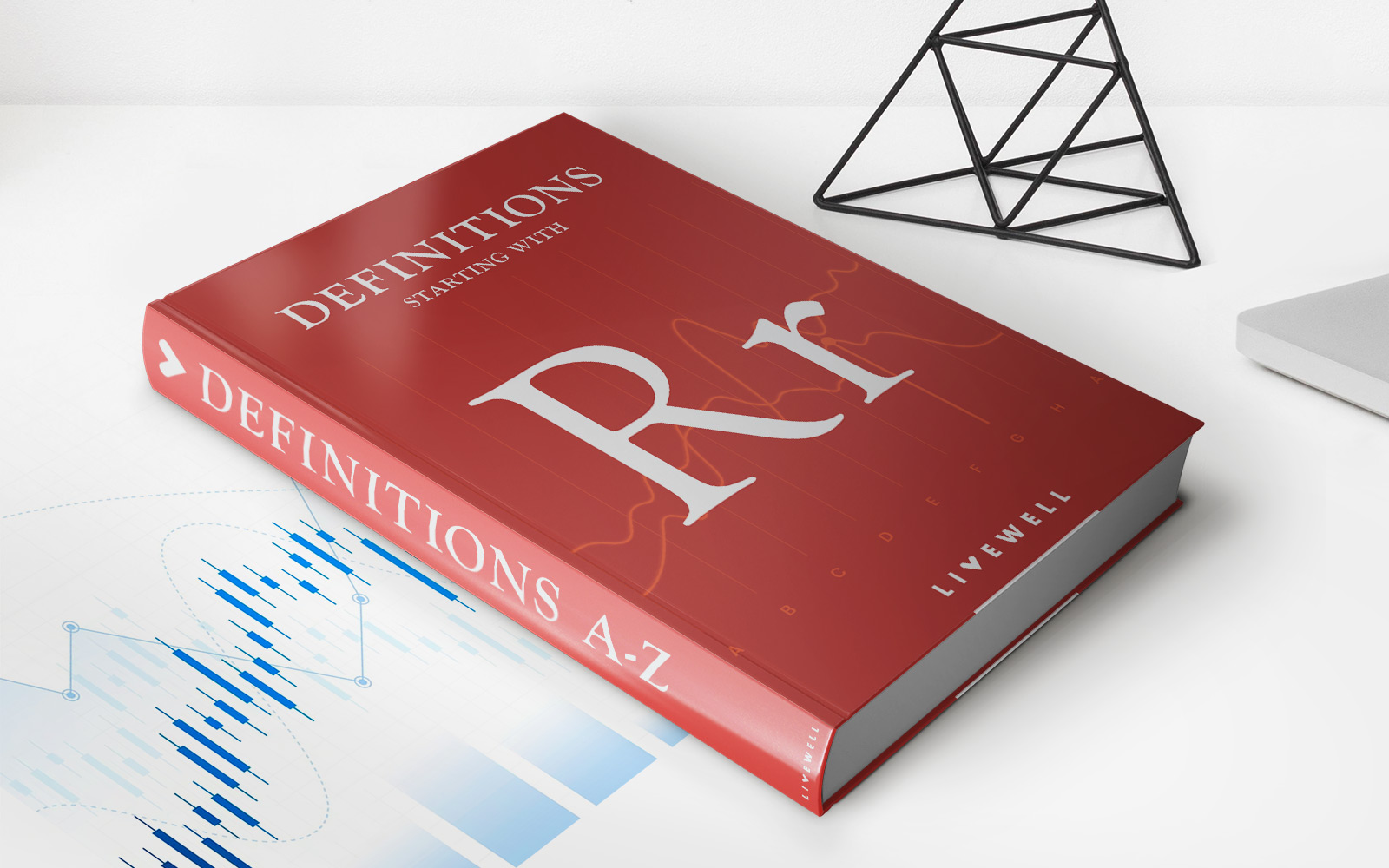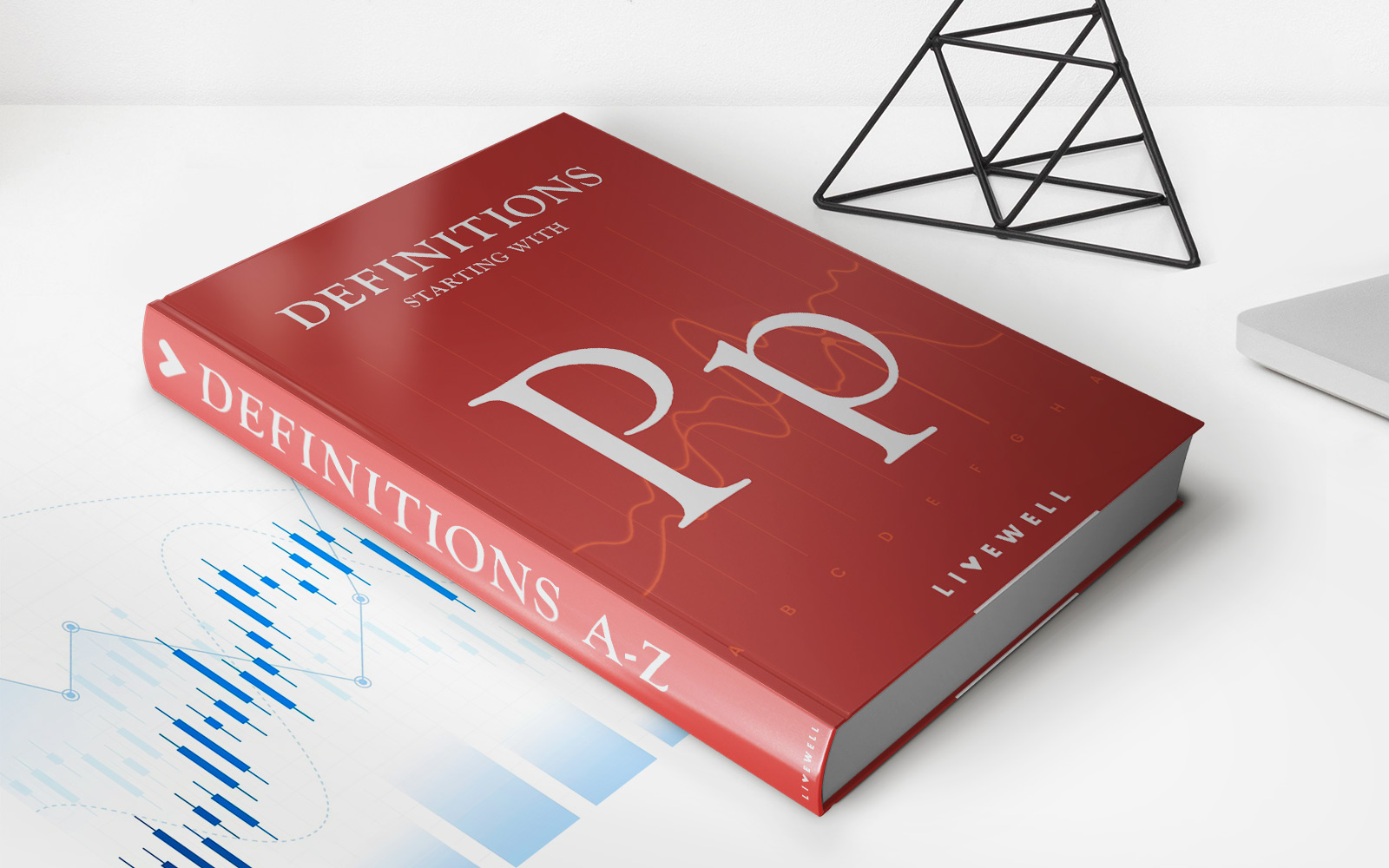

Finance
What Is Engagement Letter In Auditing
Published: December 28, 2023
Learn the importance of engagement letter in auditing and its role in ensuring financial accuracy and transparency. Discover how this crucial document impacts finance professionals.
(Many of the links in this article redirect to a specific reviewed product. Your purchase of these products through affiliate links helps to generate commission for LiveWell, at no extra cost. Learn more)
Table of Contents
Introduction
In the world of auditing, engagement letters play a crucial role in establishing the framework and expectations between auditors and their clients. An engagement letter is a formal agreement that outlines the terms and conditions of the auditing engagement, including the scope of work, responsibilities of both parties, fee arrangements, and other important details.
Engagement letters are essentially the foundation of the audit process, providing a clear understanding of the objectives, deliverables, and timelines. It sets the stage for a professional and transparent working relationship between the auditor and the client.
The purpose of this article is to provide an in-depth understanding of what an engagement letter entails, its key components, and its significance in the field of auditing. Whether you are an auditor or a client seeking auditing services, understanding the engagement letter is crucial to ensure a successful and mutually beneficial relationship.
So, let’s dive deeper into the world of engagement letters and uncover their importance in the realm of auditing.
Purpose of the Engagement Letter
The engagement letter serves as a vital document that sets the stage for the auditing process and outlines the expectations of both the auditor and the client. It serves several important purposes, which we will explore in detail.
1. Establishing Clear Expectations: The engagement letter ensures that both parties have a clear understanding of the scope of work, objectives, and deliverables. It eliminates any ambiguities or misunderstandings that may arise during the course of the audit, thus providing a solid foundation for the engagement.
2. Defining the Scope of Work: The engagement letter outlines the specific activities that the auditor will undertake during the audit. It clearly defines the boundaries of the audit, including the areas to be examined, the timeframe of the audit, and the methodology to be used. By defining the scope of work, the engagement letter helps manage expectations and avoid scope creep.
3. Outlining Responsibilities: The engagement letter clearly delineates the roles and responsibilities of both the auditor and the client. It specifies what information, documents, and access the client will provide to the auditor, ensuring cooperation and transparency throughout the audit process. It also highlights the responsibilities of the auditor, such as maintaining independence, exercising professional judgment, and maintaining confidentiality.
4. Providing Legal Protection: The engagement letter serves as a legal contract between the auditor and the client. It helps protect both parties by clearly outlining the terms of the engagement, including any limitations of liability. In case of disputes or disagreements, the engagement letter helps provide clarity on the agreed-upon terms and can be used as evidence if necessary.
5. Enhancing Communication: The engagement letter facilitates effective communication between the auditor and the client. It provides a platform for discussing any concerns, expectations, or changes in circumstances that may affect the audit. Regular communication is critical for a successful audit, and the engagement letter sets the stage for open and effective communication throughout the engagement.
Overall, the purpose of the engagement letter is to ensure a mutual understanding between the auditor and the client, establish a framework for the audit process, and provide legal protection for both parties. It serves as a valuable tool in managing expectations, defining responsibilities, and fostering effective communication throughout the auditing engagement.
Key Components of the Engagement Letter
The engagement letter is a comprehensive document that includes several key components to ensure a clear and thorough understanding between auditors and their clients. Let’s explore the essential elements of an engagement letter:
1. Identification of the Parties: The engagement letter begins by clearly identifying the parties involved, including the name and address of the auditor and the client. This section also includes any subsidiary companies or entities that may be included in the audit.
2. Description of the Audit Engagement: This component outlines the specific nature of the audit engagement. It includes a detailed description of the audit services to be provided, such as financial statement audits, compliance audits, or internal control reviews.
3. Objectives and Deliverables: The engagement letter clearly defines the objectives of the audit and the expected deliverables. It explains the purpose of the audit engagement and what the auditor aims to achieve through the process. This section may also include details on interim reporting and the final audit report to be provided to the client.
4. Scope of Work: The scope of work section is crucial as it defines the specific areas or processes that will be examined during the audit. It may include a breakdown of financial statements, internal control systems, compliance with regulations, or any other relevant areas to be reviewed. This component helps set boundaries and manage expectations regarding the extent of the audit.
5. Timeline and Reporting: The engagement letter specifies the timeline for the audit engagement, including start and end dates, as well as any milestones or interim reporting requirements. It also outlines the frequency and format of reporting, whether it be monthly, quarterly, or upon completion of the audit.
6. Fee Arrangements: This section outlines the financial aspects of the engagement, including the fee structure and payment terms. It may detail the basis of fees, such as hourly rates or fixed fees, and any additional expenses that may be incurred during the audit process. Clear terms regarding invoicing and payment deadlines are also included in this component.
7. Confidentiality: Confidentiality is a crucial aspect of the auditing engagement, and the engagement letter clearly defines the expectations regarding the confidentiality of client information. It may include provisions on the non-disclosure of information, the handling of sensitive data, and the measures in place to safeguard client information.
8. Termination: The engagement letter provides clarity on the circumstances that may lead to the termination of the engagement. This includes factors such as non-compliance with the agreed-upon terms, breaches of confidentiality, or other significant issues that may arise during the audit process.
9. Governing Laws and Dispute Resolution: This component outlines the governing laws and jurisdiction under which the engagement letter will be interpreted. It may also include provisions on dispute resolution, such as arbitration or mediation, in case of conflicts between the auditor and the client.
10. Signatures: The engagement letter concludes with the signatures of both parties, acknowledging their understanding and acceptance of the terms and conditions outlined in the document. Signatures signify the formal acceptance of the engagement and agreement to proceed with the audit.
These key components form the essential elements of an engagement letter. By including these components, auditors and clients can establish a comprehensive agreement that ensures a clear understanding of the audit engagement, sets expectations, and lays the groundwork for a successful working relationship.
Scope of Work
The scope of work section in an engagement letter is a critical component that outlines the specific areas, processes, and activities that will be covered during the audit. It sets the boundaries for the audit engagement and clarifies what will be examined and evaluated. Let’s delve into the details of the scope of work in an engagement letter:
1. Financial Statements: The engagement letter will specify which financial statements will be audited. Typically, this includes the balance sheet, income statement, statement of cash flows, and statement of changes in equity. It may also mention specific accounts or transactions that require additional scrutiny based on risk assessments.
2. Internal Control Systems: The scope of work may address the evaluation of the client’s internal control systems. This involves assessing the effectiveness of controls in place to safeguard assets, ensure accurate financial reporting, and comply with relevant laws and regulations.
3. Compliance with Laws and Regulations: If applicable, the engagement letter may include an assessment of the client’s compliance with laws, regulations, and industry-specific standards. This could involve verifying adherence to tax laws, environmental regulations, occupational health and safety standards, or any other legal requirements specific to the client’s industry.
4. Audit Procedures: The engagement letter may outline the specific audit procedures to be followed in order to achieve the objectives of the engagement. This could include sampling techniques, substantive testing, analytical procedures, and other methods used to gather sufficient audit evidence.
5. System and Data Analysis: In today’s digital landscape, the scope of work may involve a review of the client’s information systems and data management practices. This could include assessing data integrity, data security measures, and the accuracy of system-generated reports.
6. Inventory and Asset Evaluation: If the client deals with physical inventory or significant tangible assets, the engagement letter may specify the extent of the audit procedures to be performed in those areas. This could involve physical inventory counts, valuation assessments, and verification of ownership records.
7. Risk Assessment and Fraud Detection: The scope of work may include procedures to identify and assess the risk of material misstatement due to fraud or error in the financial statements. This may involve analyzing transactional data, conducting interviews, and conducting additional audit procedures in high-risk areas.
8. Subsidiaries and Related Parties: If the client has subsidiaries or related party transactions, the engagement letter may address the level of scrutiny and procedures to be applied in reviewing these areas. It may also include the evaluation of any intercompany transactions and their impact on the financial statements.
9. Other Engagements: Depending on the specific engagement, the scope of work may also include procedures related to other areas such as reviews, agreed-upon procedures engagements, or special investigations. The engagement letter will outline the specific procedures to be performed in these instances.
It’s important for the scope of work to be clearly defined in the engagement letter to manage expectations and avoid misunderstandings between the auditor and the client. By explicitly stating the areas and processes that will be examined, the engagement letter ensures that both parties are on the same page and have a shared understanding of the scope of the audit engagement.
Responsibilities of the Auditor
When engaging in an audit, auditors have specific responsibilities that they must uphold to ensure the accuracy, integrity, and reliability of the audit process. These responsibilities are outlined in the engagement letter and provide clear expectations for the auditor’s role. Let’s explore the key responsibilities of the auditor:
1. Independence and Objectivity: Auditors must maintain independence throughout the audit engagement. They must exercise professional skepticism and impartiality, free from any conflicts of interest or bias, to provide an unbiased assessment of the client’s financial statements and internal control systems.
2. Professional Competence: Auditors are expected to possess the necessary knowledge, expertise, and competence to perform the audit engagement effectively. They should continually update their skills, stay abreast of the latest auditing standards, regulations, and industry practices, and apply them appropriately during the audit process.
3. Compliance with Auditing Standards: Auditors are responsible for conducting the audit in accordance with the applicable auditing standards. They must follow the professional guidelines set forth by regulatory bodies, such as the International Standards on Auditing (ISAs) or Generally Accepted Auditing Standards (GAAS), to ensure a consistent and thorough audit process.
4. Planning and Risk Assessment: Auditors are responsible for developing an audit plan that outlines the objectives, procedures, and resources required to conduct the audit effectively. This includes assessing the risk of material misstatement, identifying significant areas of the audit, and designing appropriate audit procedures to address those risks.
5. Gathering Sufficient and Appropriate Audit Evidence: Auditors have the responsibility to obtain sufficient and appropriate audit evidence to support their opinions on the client’s financial statements. This involves implementing various audit procedures, such as inspection, inquiry, observation, and reperformance, to gather relevant and reliable information.
6. Communication and Reporting: Auditors are responsible for communicating with the client throughout the audit engagement. This includes discussing any significant findings, issues, or concerns identified during the audit process. The auditor must also prepare comprehensive audit reports that clearly present the audit findings, opinions, and recommendations in a clear and understandable manner.
7. Professional Judgment: Auditors are expected to exercise professional judgment when making decisions throughout the audit engagement. This includes assessing the materiality of identified misstatements, evaluating the appropriateness of accounting policies, and determining the overall fairness of the financial statements.
8. Confidentiality: Auditors must maintain strict confidentiality regarding the client’s information obtained during the audit engagement. They must adhere to professional ethical standards and legal obligations to ensure that client data is protected and used only for audit purposes.
9. Professional Development: Auditors have a responsibility to invest in their professional development and continuously enhance their knowledge and skills. This may involve attending training programs, earning relevant certifications, and actively participating in professional organizations to stay updated with the evolving audit landscape.
10. Professional Conduct: Auditors must adhere to the highest standards of professional conduct and ethical behavior. They should conduct themselves with integrity, honesty, objectivity, and due care during the audit engagement. This includes following the auditing code of ethics, maintaining professional independence, and treating all client information with confidentiality and respect.
By fulfilling these responsibilities, auditors contribute to the credibility and reliability of the audit process. They play a crucial role in providing assurance to stakeholders regarding the accuracy and completeness of the client’s financial statements and internal controls.
Responsibilities of the Client
The success of an audit engagement relies not only on the responsibilities of the auditor but also on the active participation and cooperation of the client. The client has important responsibilities to fulfill in order to facilitate a smooth and effective audit process. Let’s explore the key responsibilities of the client:
1. Providing Access to Information and Records: The client is responsible for providing the auditor with access to all necessary information, records, and documents relating to the audit engagement. This includes financial statements, supporting documentation, bank statements, contracts, and any other relevant materials requested by the auditor.
2. Maintaining Proper Accounting Records: The client is responsible for keeping accurate and up-to-date accounting records that reflect their financial transactions. These records should be well-organized, categorized, and supported by appropriate documentation. The client should also ensure that their accounting records comply with relevant accounting principles and standards.
3. Ensuring Internal Control Compliance: The client is responsible for establishing and maintaining effective internal controls to safeguard assets, ensure accurate financial reporting, and comply with relevant laws and regulations. This includes maintaining segregation of duties, implementing control procedures, and monitoring the effectiveness of internal controls.
4. Providing Timely and Accurate Information: The client is responsible for providing the auditor with timely and accurate information throughout the audit engagement. This includes responding to auditor inquiries, providing requested documentation promptly, and disclosing any relevant changes in the business or financial transactions that may impact the audit.
5. Cooperation and Collaboration: The client is responsible for cooperating and collaborating with the auditor throughout the audit process. This includes facilitating auditor access to personnel, departments, and facilities, as needed, to gather relevant information and perform necessary audit procedures. The client should also address audit-related queries or concerns in a timely and transparent manner.
6. Addressing Identified Issues: If the auditor identifies any significant issues, weaknesses, or areas that require improvement during the audit process, the client is responsible for addressing these concerns. This may involve implementing corrective measures, strengthening internal controls, or resolving any accounting discrepancies or errors found during the audit.
7. Reviewing and Approving the Audit Findings: The client is responsible for reviewing and approving the audit findings and reports provided by the auditor. They should carefully assess the auditor’s opinions, recommendations, and any potential impact on their financial statements or operations. The client should engage in constructive dialogue with the auditor to ensure a complete and accurate understanding of the audit results.
8. Compliance with Legal and Regulatory Requirements: The client is responsible for complying with all applicable legal and regulatory requirements, including providing accurate and complete financial statements in accordance with relevant accounting standards. They should also cooperate with any regulatory or industry-specific audits or inspections that may be required.
9. Maintaining Professionalism and Integrity: The client should maintain professionalism and integrity throughout the audit engagement. This includes providing honest and truthful information, ensuring transparency in financial reporting, and promptly addressing any ethical issues or conflicts of interest that may arise during the audit process.
10. Client-Auditor Relationship: The client is responsible for fostering a positive and constructive relationship with the auditor. This includes listening to the auditor’s recommendations, providing feedback to improve the audit process, and maintaining open lines of communication to address any concerns or questions raised by the auditor.
By fulfilling these responsibilities, the client plays a crucial role in facilitating a successful and efficient audit engagement. Active cooperation, transparency, and adherence to best practices contribute to a smooth audit process, ensuring that the desired outcomes of the audit are achieved.
Duration and Termination
The engagement letter typically includes provisions regarding the duration of the audit engagement and the circumstances under which the engagement can be terminated. These provisions help establish a clear timeline and provide guidance on how the engagement can be concluded. Let’s explore the key aspects of duration and termination in an engagement letter:
1. Duration of the Engagement: The engagement letter specifies the expected duration of the audit engagement. It outlines the start date of the engagement and provides an estimated timeline for the completion of the audit. The duration may vary depending on the complexity of the audit, the size of the client’s organization, and other relevant factors. This section provides clarity on the anticipated time commitment for both the auditor and the client.
2. Extension of the Engagement: The engagement letter may include provisions for extending the duration of the engagement if necessary. This could be due to unforeseen circumstances, additional audit work required, or changes in the client’s circumstances. The conditions and procedures for extending the engagement, including any potential changes in fees and deliverables, should be clearly outlined in this section.
3. Termination by Mutual Agreement: The engagement letter may specify that the engagement can be terminated by mutual agreement between the auditor and the client. This allows both parties to end the engagement if circumstances change, if there is a breakdown in the working relationship, or if there are other valid reasons for termination. The process for mutual agreement termination, including any notice periods and necessary discussions, should be clearly outlined.
4. Termination for Cause: The engagement letter may detail the circumstances under which either the auditor or the client can terminate the engagement for cause. This typically includes situations where there is a breach of the engagement letter terms, a failure to comply with professional standards, or significant disputes that cannot be resolved. The specific grounds for termination for cause and the procedures to be followed should be clearly stated.
5. Financial Obligations upon Termination: The engagement letter may outline the financial obligations of both parties in the event of termination. This may include any outstanding fees owed to the auditor, the reimbursement of expenses incurred during the audit engagement, or any other financial commitments that need to be settled upon termination. These obligations should be clearly specified to avoid any misunderstandings or disputes.
6. Handover and Transfer of Work: In the event of termination, the engagement letter may include provisions for the handover or transfer of work between the outgoing auditor and any new auditor engaged by the client. This section may outline the responsibilities and procedures for the transition, including the provision of audit documentation, access to information, and any necessary cooperation between the auditors.
7. Continuing Obligations: Even after the termination of the audit engagement, the engagement letter may specify certain continuing obligations for both the auditor and the client. This may include provisions related to confidentiality, the retention of audit documentation, and any post-audit support or assistance that the auditor may provide.
It is important for the engagement letter to provide a clear framework for the duration and termination of the audit engagement. This ensures that both parties have a shared understanding of the expected timeframe, the circumstances under which the engagement can be terminated, and the necessary procedures to be followed in such instances.
Fee Arrangements
The fee arrangement section within an engagement letter is a crucial component that outlines the financial aspects of the audit engagement. It establishes the agreement between the auditor and the client regarding the fees to be paid for the audit services rendered. Let’s delve into the key considerations related to fee arrangements:
1. Fee Structure: The engagement letter specifies the fee structure for the audit engagement. This includes how the fees will be calculated, whether it is based on an hourly rate, a fixed fee, or a combination of both. The fee structure should be clearly defined to avoid any misunderstandings or disputes.
2. Basis of Fees: The engagement letter outlines the basis on which the fees will be calculated. It may include factors such as the size and complexity of the client’s organization, the level of risk involved, the extent of work required, and any specialized expertise required for the engagement. The basis of fees should be fair and in line with industry standards.
3. Additional Services: The fee arrangement section may address any additional services that may be required beyond the scope of the initial engagement. If there are any services or deliverables that fall outside the agreed-upon scope of work, the procedures for calculating additional fees should be clearly outlined. This ensures transparency and avoids potential misunderstandings.
4. Reimbursement of Expenses: The engagement letter may touch upon the reimbursement of expenses incurred during the audit engagement. This can include costs such as travel, accommodations, data analysis tools, or other direct expenses necessary to conduct the audit. The engagement letter should specify how these expenses will be handled and reimbursed.
5. Invoicing and Payment Terms: The engagement letter sets out the invoicing and payment terms for the audit services. It specifies the intervals at which invoices will be issued (monthly, quarterly, upon completion, etc.), the due dates for payment, and the accepted methods of payment. Clear payment terms help facilitate an efficient billing and payment process.
6. Changes in Fees: The engagement letter may outline the circumstances under which changes in fees may occur. This can include scenarios where there are significant changes in the scope of work, regulatory requirements, or client requests that impact the level of effort required to perform the audit. The procedures for discussing and agreeing upon any changes in fees should be clearly defined.
7. Terms of Late Payment: The engagement letter may include terms related to late payment of fees. This can involve specifying any penalties, interest charges, or consequences for overdue payments. Clear terms regarding late payment ensure that both parties understand the expectations and consequences associated with timely fee settlement.
8. Dispute Resolution: In case of any disputes related to fees, the engagement letter may include provisions outlining the procedures for resolving such disputes. This may involve escalating the matter to higher levels within the respective organizations, engaging in mediation, or resorting to arbitration if necessary. Clear guidelines for dispute resolution help address financial disagreements in a fair and expedient manner.
Overall, the fee arrangement section in the engagement letter provides clarity on the financial aspects of the audit engagement. It ensures that both the auditor and the client have a mutual understanding of the fees to be paid, the basis for calculating those fees, and the procedures for invoicing and payment. Clear and fair fee arrangements contribute to a positive working relationship between the auditor and the client throughout the audit engagement.
Confidentiality
The confidentiality section within an engagement letter is a crucial component that addresses the protection of sensitive information and ensures the privacy of client data. It outlines the expectations and responsibilities of both the auditor and the client regarding the handling and safeguarding of confidential information. Let’s examine the key considerations related to confidentiality:
1. Non-Disclosure of Information: The engagement letter specifies that both the auditor and the client have a responsibility to maintain the confidentiality of all information acquired during the audit engagement. This includes financial data, business strategies, trade secrets, and any other proprietary or sensitive information disclosed by the client.
2. Use of Confidential Information: The engagement letter clarifies that the auditor will use confidential information solely for the purpose of performing the audit services. It emphasizes that the information provided by the client will be used strictly for the benefit of the client and in accordance with professional auditing standards and ethical guidelines.
3. Controlled Access to Information: The engagement letter highlights the need for both the auditor and the client to limit access to confidential information to only those individuals who require it for the purpose of the audit engagement. This helps prevent unauthorized disclosure and ensures that confidential information remains protected.
4. Confidentiality Obligations of Personnel: The engagement letter acknowledges that the auditor will ensure their personnel are aware of and comply with the confidentiality requirements. This includes any employees, contractors, or other individuals engaged by the auditor to assist with the audit engagement. The auditor is responsible for enforcing confidentiality obligations on their personnel.
5. Handling of Hard Copy and Electronic Documents: The engagement letter addresses the proper handling of hard copy and electronic documents containing confidential information. It may include provisions for secure storage, restricted access, encryption, or other safeguards to protect against unauthorized disclosure or loss of data.
6. Return or Destruction of Information: The engagement letter may outline the requirements for returning or destroying confidential information once the audit engagement is completed. This ensures that client data is not retained unnecessarily and that all sensitive information is appropriately disposed of to prevent any future unauthorized access.
7. Disclosure to Third Parties: The engagement letter addresses the circumstances under which the auditor may be required to disclose confidential information to third parties. This can include situations where the auditor is legally obligated to disclose information, such as responding to a court order or complying with regulatory requirements. The engagement letter should specify that, in such cases, the auditor will notify the client promptly.
8. Period of Confidentiality: The engagement letter may define the period for which the confidentiality obligations apply. This clarifies that the confidentiality obligations extend beyond the termination of the audit engagement and may continue for a specified period, or in some cases indefinitely, to protect client information from unauthorized use or disclosure.
By incorporating a robust confidentiality section in the engagement letter, both the auditor and the client can ensure the privacy and security of confidential information throughout the audit engagement. Clear guidelines and expectations regarding confidentiality help foster trust, maintain the integrity of the audit process, and protect the rights and interests of the client.
Communication and Reporting
The communication and reporting section within an engagement letter is a vital component that outlines the expectations and procedures for effective communication between the auditor and the client throughout the audit engagement. This section ensures that both parties have a clear understanding of how information will be exchanged, progress will be reported, and potential concerns or issues will be addressed. Let’s explore the key considerations related to communication and reporting:
1. Regular Update Meetings: The engagement letter may specify that regular meetings will be held between the auditor and the client to discuss the progress of the audit engagement. These meetings provide an opportunity to share updates, address any questions or concerns, and ensure alignment on the audit process.
2. Point of Contact: The engagement letter identifies the primary point of contact for both the auditor and the client. This ensures clear lines of communication and facilitates efficient information exchange. It is crucial for both parties to have designated individuals who will serve as the main contact to address any audit-related queries or issues.
3. Audit Inquiries: The engagement letter outlines the expectations for how the client will respond to audit inquiries and requests for information. It emphasizes the importance of prompt communication and the provision of accurate and complete information to ensure the smooth progress of the audit engagement.
4. Reporting Schedule: The engagement letter defines the reporting schedule for the audit engagement. It specifies the frequency and format of written audit reports to be provided by the auditor, as well as any interim reporting requirements. The reporting schedule is important for keeping the client informed about the progress and findings of the audit.
5. Audit Findings and Recommendations: The engagement letter clarifies that the auditor will provide the client with a comprehensive audit report summarizing the findings, observations, and recommendations. It specifies that the report will be based on professional standards and will aim to provide a balanced and objective assessment of the client’s financial statements and internal controls.
6. Communication of Significant Issues: The engagement letter addresses the responsibility of the auditor to promptly communicate any significant issues identified during the audit engagement. This includes material misstatements, potential fraud risks, control weaknesses, or any other matters that may have a significant impact on the client’s financial statements or operations.
7. Communication Channels: The engagement letter outlines the preferred methods of communication between the auditor and the client. This may include in-person meetings, phone calls, emails, or secure file-sharing platforms. The engagement letter should specify the mode of communication that is most effective and convenient for both parties.
8. Escalation of Concerns: The engagement letter may address the procedures for escalating concerns, disagreements, or conflicts that arise during the audit engagement. It provides a mechanism for resolving issues in a timely and professional manner, such as involving senior management or key decision-makers from both the auditor’s and the client’s organizations.
9. Client Feedback: The engagement letter may encourage the client to provide feedback on the audit process, communication, and overall satisfaction with the services provided. This feedback helps the auditor improve their processes and reinforces a culture of continuous improvement.
10. Confidentiality of Communication: The engagement letter emphasizes that all communication between the auditor and the client will be treated with strict confidentiality. It clarifies that communication will be limited to those individuals involved in the audit engagement and will not be disclosed to third parties, unless required by law.
By including clear communication and reporting guidelines, the engagement letter helps establish a framework for effective and transparent communication between the auditor and the client. These guidelines facilitate the exchange of information, promote collaboration, and ensure that both parties are well-informed about the progress and outcomes of the audit engagement.
Legal and Ethical Considerations
The legal and ethical considerations section within an engagement letter is a critical component that emphasizes the need for compliance with applicable laws, regulations, and professional ethical standards. It establishes the expectations for both the auditor and the client to conduct the audit engagement in a legal, ethical, and responsible manner. Let’s explore the key considerations related to legal and ethical aspects:
1. Legal Compliance: The engagement letter highlights the importance of adherence to all relevant laws and regulations throughout the audit engagement. The auditor and the client are expected to comply with local, regional, and international legal requirements, ensuring that the audit activities are conducted within the legal framework applicable to the client’s industry and location.
2. Ethical Standards: The engagement letter emphasizes the need for auditors to adhere to high ethical standards in performing their duties. This includes maintaining objectivity, integrity, independence, and professionalism throughout the audit engagement. The client is expected to support and facilitate the adherence to ethical standards by providing accurate and truthful information to the auditor.
3. Independence: The engagement letter explicitly states the requirement for the auditor’s independence. Auditors must maintain independence from the client, both in appearance and in fact, to ensure the objectivity and integrity of their opinions and findings. This includes avoiding conflicts of interest that could compromise their independence or perceived objectivity.
4. Confidentiality and Data Protection: The engagement letter covers the need for both parties to maintain strict confidentiality and protect client data. The auditor is responsible for ensuring the secure handling, storage, and disposal of client information obtained during the audit engagement. The client, in turn, is expected to provide access only to relevant and necessary information, safeguarding confidential data against unauthorized disclosure.
5. Professional Liability: The engagement letter may include a section addressing the limitations of the auditor’s liability. This clarifies the responsibility of the auditor within the defined scope of work and the extent of their liability should any issues arise during or as a result of the audit engagement. It provides protection for both the auditor and the client in the event of disputes or claims.
6. Conflict Resolution: The engagement letter may outline the procedures for resolving any conflicts or disagreements that may arise during the audit engagement. This may involve engaging in open and constructive dialogue, escalation to supervisory levels within both organizations, and potentially utilizing alternative dispute resolution methods such as mediation or arbitration.
7. Regulatory and Ethical Frameworks: The engagement letter acknowledges that the audit engagement will be conducted within the framework of applicable auditing standards, regulations, and professional ethical guidelines. The auditor is expected to follow the International Standards on Auditing (ISAs) or relevant local standards, ensuring that the audit work meets the requirements defined by professional bodies and regulatory authorities.
8. Code of Conduct: The engagement letter may reference the need for both parties to adhere to their respective codes of conduct. This includes the auditor’s commitment to the professional code of ethics defined by their professional association, as well as any specific industry ethics or guidelines that may apply to the client’s organization.
9. Legal Disclaimer: The engagement letter may include a legal disclaimer to protect against unforeseen circumstances or events beyond the control of the auditor or the client. This may include disclaimers related to changes in laws, regulations, or circumstances that could impact the audit engagement and the responsibilities of the parties involved.
By addressing legal and ethical considerations within the engagement letter, both the auditor and the client demonstrate their commitment to conducting the audit engagement in a responsible, legal, and ethical manner. The inclusion of these considerations helps ensure compliance with applicable laws, maintain professional ethics, and protect the interests of both parties involved in the audit engagement.
Conclusion
The engagement letter serves as a crucial document in the auditing process, providing a comprehensive framework for the relationship between auditors and their clients. It outlines the expectations, responsibilities, and terms of the audit engagement, providing clarity and establishing a solid foundation for a successful working relationship.
Throughout this article, we have explored the key components of an engagement letter, including its purpose, scope of work, responsibilities of both the auditor and the client, fee arrangements, confidentiality requirements, communication and reporting procedures, and legal and ethical considerations.
The engagement letter ensures that both parties have a shared understanding of the objectives, deliverables, and timelines of the audit engagement. It sets clear boundaries, manages expectations, and outlines the roles and responsibilities of the auditor and the client. It helps protect the auditor’s independence, maintain confidentiality, and comply with legal and ethical obligations.
Effective communication and reporting mechanisms are emphasized in the engagement letter to facilitate collaboration, address concerns, and ensure timely delivery of audit findings and recommendations. The engagement letter also highlights the need for compliance with applicable laws, regulations, and professional ethical standards, protecting the interests of both the auditor and the client.
In conclusion, the engagement letter plays a vital role in establishing the foundation for a successful audit engagement. By clearly defining the expectations, scope of work, responsibilities, and terms, it ensures a transparent, professional, and mutually beneficial relationship between auditors and their clients. It is a valuable document that promotes trust, communication, and the delivery of high-quality audit services. By adhering to the principles outlined in the engagement letter, auditors and clients can work together to achieve reliable and accurate financial reporting, ultimately contributing to the success and integrity of their organizations.














